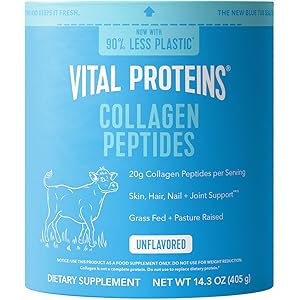Vital Proteins Collagen Peptides Powder - Grass Fed Collagen Peptides for Hair, Nail, Skin, Bone & Joint Health, Unflavored, 14.3oz
$23.79 (as of October 27, 2025 06:27 GMT +00:00 - More infoProduct prices and availability are accurate as of the date/time indicated and are subject to change. Any price and availability information displayed on [relevant Amazon Site(s), as applicable] at the time of purchase will apply to the purchase of this product.)Understanding Safe Cooking Temperatures
When it comes to food safety, understanding the safe temperatures for cooking food is crucial. Cooking food to the right temperature not only enhances its flavor but also eliminates harmful bacteria that can cause foodborne illnesses. The USDA provides guidelines that specify the minimum internal temperatures for various types of food, ensuring that they are safe to consume.
Meat and Poultry Temperature Guidelines
For meat and poultry, the safe cooking temperatures vary depending on the type. For instance, ground meats, such as beef, pork, and lamb, should be cooked to an internal temperature of 160°F (71°C). Whole cuts of beef, pork, lamb, and veal should reach at least 145°F (63°C) and should rest for three minutes before carving or consuming. Poultry, including chicken and turkey, must be cooked to a minimum internal temperature of 165°F (74°C) to ensure safety.
Seafood Cooking Temperatures
Seafood also has specific safe cooking temperatures to prevent foodborne illnesses. Fish should be cooked to an internal temperature of 145°F (63°C), while shellfish, such as shrimp and crab, should also reach this temperature. Cooking seafood properly not only ensures safety but also preserves its delicate texture and flavor, making it a delightful addition to any meal.
Eggs and Egg Dishes
Eggs are a versatile ingredient, but they must be cooked to a safe temperature to eliminate the risk of salmonella. The USDA recommends cooking eggs until both the yolk and white are firm, which typically means reaching an internal temperature of 160°F (71°C). Dishes containing eggs, such as casseroles, should also be cooked to this temperature to ensure they are safe to eat.
Leftovers and Reheating Guidelines
Leftovers are a convenient way to enjoy meals, but they must be reheated to a safe temperature to prevent foodborne illness. The USDA advises reheating leftovers to an internal temperature of 165°F (74°C). Using a food thermometer is the best way to ensure that your leftovers are heated thoroughly, killing any bacteria that may have developed during storage.
Importance of Using a Food Thermometer
A food thermometer is an essential tool in the kitchen for ensuring that food reaches the safe temperatures for cooking food. It provides an accurate reading of the internal temperature, allowing cooks to avoid undercooking or overcooking their meals. Investing in a reliable food thermometer can significantly enhance food safety and quality in your cooking practices.
Cooking Methods and Their Impact on Temperature
Different cooking methods can affect how heat penetrates food, influencing the safe cooking temperatures. For example, grilling, frying, and roasting may require different approaches to ensure that the food reaches the necessary internal temperature. Understanding how various cooking methods impact temperature can help you achieve perfectly cooked meals while maintaining food safety.
Vegetables and Safe Cooking Temperatures
While vegetables are generally safe to eat raw, cooking them can enhance their flavor and digestibility. The USDA does not specify a minimum safe cooking temperature for vegetables, but cooking them until they are tender is recommended. For frozen vegetables, cooking them to an internal temperature of 165°F (74°C) is advisable to ensure they are heated thoroughly and safe to consume.
Food Safety Practices Beyond Temperature
While cooking food to the safe temperatures is vital, other food safety practices should not be overlooked. Proper food handling, including washing hands, avoiding cross-contamination, and storing food at the correct temperatures, plays a significant role in preventing foodborne illnesses. Combining these practices with safe cooking temperatures creates a comprehensive approach to food safety.


